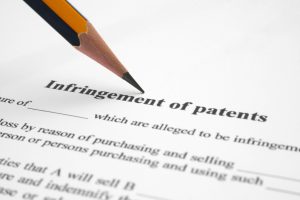The bill aims to reduce US drug prices and could limit IP strategies undertaken by reference biologic makers to ward off biosimilar competition.
Having been first introduce to the House in April, H R 2884 was approved by the House Judiciary Committee yesterday as part of four bills aimed at tackling the high prices of drugs in the US.
According to the text, the bill “limits in certain instances the number of patents that the manufacturer of a biologic drug can assert in a lawsuit against a company seeking to sell a biosimilar version of that drug,” effectively helping to resolve patent infringement claims made by reference biologic makers against their biosimilar maker counterparts.

Image: Stock Photo Secrets
Reference biologic makers have been skillfully navigating the IP landscape to protect their biologics in a strategy commonly referred to as the ‘patent dance.’
Full details regarding the ‘dance’ are in the box below. But as an example of the effectiveness from a business standpoint AbbVie has an extensive maze of around 130 patents surrounding its blockbuster mAb Humira (adalimumab), which is helping to keep biosimilar competition out of the US until at least 2023, though
“The bill’s provisions apply to an existing framework that gives the biosimilar manufacturer an abbreviated path to Food and Drug Administration approval to sell the biosimilar,” the text states.
“Specifically, if the biosimilar manufacturer completes certain actions under the framework, such as sharing certain information about its product with the reference product manufacturer, the bill limits the number of certain patents that the reference product manufacturer may assert in a lawsuit, such as patents that were filed more than four years after the reference product received market approval. The limit shall not apply to patents claiming certain methods for using the biologic drug.”
The three other bills voted for yesterday aim to stop drugmakers raising prices to fend off competition and ban the tactic of paying generic companies to delay bringing cheaper versions of their medicines to market.
All four bills will next be taken up by the full House and Senate.
| The Patent Dance
Similar to Hatch–Waxman litigation, the The Biologics Price Competition And Innovation Act (BPCIA) from 2009 provides a framework for follow-on biologic patent lawsuits. The BPCIA sets out a “patent dance” in which the aBLA applicant exchanges information with the owner of the reference product (the reference product sponsor, RPS) over two phases of litigation. This dance begins after an applicant submits its aBLA, when it must hand over information about its product to the RPS. The RPS responds with a list of patents that it believes will be infringed. The parties then argue about whether those patents cover the aBLA product. Eventually they negotiate the scope of “phase 1” or “early phase” litigation, which is supposed to begin no later than 250 days after the applicant submitted the aBLA. That applicant can limit the number of patents involved in this early phase litigation to as few as one, which gives it an advantage that is not available under the Hatch–Waxman Act. By setting a low number of patents in early phase litigation, an aBLA applicant can delay litigation over many patents. For example, the applicant could try to put off patents that claim a method of treatment, which then would implicate induced infringement. As discussed below, delaying litigation of method-totreat patents could provide a tactical advantage to aBLA applicants. “Phase 2” or “late-phase” litigation happens after an aBLA applicant notifies the RPS that, in 180 days or more, it intends to go market with a follow-on product. During this phase, the RPS can sue the other company based on patents that were identified at the beginning of the patent dance but not included in early phase litigation — as well as on new patents. After notification, but before the first commercial marketing, that RPS can seek a preliminary injunction to prevent the aBLA applicant from releasing its product. Because the aBLA applicant initiates late-phase litigation, that applicant has more control over when it will be sued. A deep understanding of the patent dance enables aBLA applicants to influence the timing of lawsuits against them, providing them with a strategic edge that is not available in Hatch–Waxman litigation. And that could make or break their defense. For example, aBLA applicants may want to limit the number of patents that can be litigated in the early phase to reduce the chance that method claims will be asserted against them until after the launch of their follow-on products. Or an aBLA applicant might delay serving its notice of commercial marketing to put off late-phase litigation. That could allow more time for physicians to become familiar with sources not attributable to the aBLA applicant as they learn how to prescribe the reference product. Alternatively, an aBLA applicant might prefer to serve its notice of commercial marketing early on, betting that the RPS will not sue before the date of commercial marketing and thereby lose its right to a preliminary injunction. Depending on the strength of the patents, an aBLA applicant might even decide to launch at risk without engaging in the patent dance at all. By doing so, the company could prevent disclosure of trade secrets during a patent dance. That might delay infringement analysis until after a product has launched, at which point the probative value of its label could be less compelling. |
